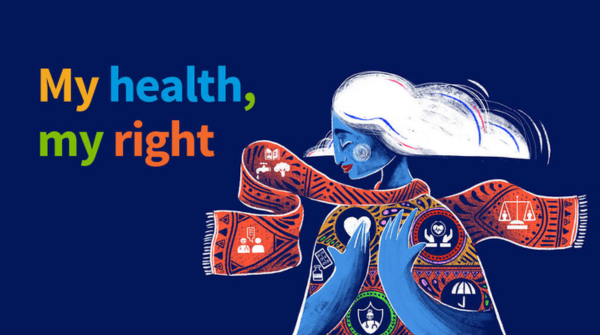5 Reasons to Ditch Cow Leather and Switch to Cactus Leather

What is the problem with cow leather anyway?
Speed of fashion production has accelerated dramatically in the past 10 years which in turn has greatly impacted the climate, environment and consumer habits. The fashion industry is the fifth most polluting industry on the planet, equal to livestock. It produces 10% of all humanity’s carbon emissions and is the second-largest consumer of the world’s water supply.
Did you know it takes the amount of water two people drink in a lifetime to tan 1 cowhide?
All that water is mixed with heavy metals, chromium and sulphates that are then discarded into waterways, causing devastation to our ecosystems. Not only that, the people tanning this leather are documented to suffer from terrible skin diseases and respiratory illnesses caused by exposure to these chemicals.
The Global Fashion Agenda has found that manufacturing leather is the most environmentally impactful material from cradle to gate. So, by buying a vegan leather alternative, you can contribute to a more ethical future.
Much of what we consume is at the expense of something or someone else. We want to change this.
Animal Cruelty
Every year, the global leather industry slaughters more than a billion animals. Most leather in the world comes from China and India where animal welfare standards are much lower than in the Australia, US and EU or pretty much non-existent.
In India, even though cows are thought of as sacred, thhey are often forced to walk for hundreds of miles to a slaughterhouse or transported over long distances in crowded trucks across the border. A PETA investigation found that workers routinely break cows’ tails and rub chili peppers and tobacco into their eyes in order to force them to get up and keep walking after they collapse from exhaustion on the way to the slaughterhouse.
Human Health
The process of tanning leather is not only bad for the environment and animals but also for humans. Tanneries have largely shifted operations worldwide from developed to undeveloped nations, where labour is cheap and environmental regulations are lax. The vast majority of leather is tanned with the use of extremely hazardous chemicals such as Formaldehyde, Chromium and Arsenic. These chemicals have all been found to be human carcinogens. These chemicals combined have been linked to increased risks of lung, nasal and sinus cancer, leukaemia, severe dermatitis, liver abnormalities, skin lesions, cardiovascular diseases and increased deaths in young adults.
In Bangladesh for example, where the tanning of leather is of great economic value, 90% of tannery workers die before the age of 50. Due to heavy water pollution, communities surrounding tanneries are put at risk, too. The toxic groundwater near tanneries has also caused health problems for residents in surrounding areas. Research found that the incidence of leukaemia among residents in an area surrounding a tannery in Kentucky USA was five times the national average.
Environmental Harm
Environmental impacts don’t end with cows’ deaths.The Higg Materials Sustainability Index, which measures the environmental sustainability of materials used in garment production, pronounced cow leather the worst ranking of any material in 2017. The environmental damage caused by each step in producing cow leather is detrimental to the environment, from deforestation and biodiversity loss, as well as greenhouse gas emissions.
Start with cutting down trees to create partureland for raising cows. Extensive cattle ranching is the number one culprit of deforestation in virtually every Amazon country and it accounts for 80% of current deforestation. A report issued by the Blacksmith Institute in 2012, listed “tanneries” at number four on the top 10 list of the world’s “Toxic Pollution Problems.”
Water Pollution and Waste
Turning skin into leather requires massive amounts of water, energy and dangerous chemicals, including mineral salts, formaldehyde, coal-tar derivatives, and various oils, dyes and finishes, some of them cyanide-based. These pollutants are responsible for the contamination of all nearby surface and groundwater systems with severely high levels of chromium. In Hazaribagh, for example—a particularly large tanning region of Bangladesh that has over 200 separate tanneries—it is estimated that 7.7 million litres of wastewater and 88 million tons of solid waste are disposed of annually.
Wastewater and solid waste from tanning operations often find their way into surface water, where toxins are carried downstream and contaminate water used for bathing, cooking, swimming and irrigation. Chromium waste can also seep into the soil and contaminate groundwater systems that provide drinking water for nearby communities. In addition, contamination in water can build up in aquatic animals, which are a common source of food.
It’s a co-product not “just a by-product” of the meat industry.
It’s very possible that your leather products are made from animals that were killed only (or mainly) for their skin. The skin of the animal is often considered to be a significant economic co-product of the meatpacking industry. Many people argue that buying leather is using a part of the animal that is already going to waste. This is just not true, many of the animals killed in places like India, China, Brazil (and many other countries) are killed expressly for their skins.
According to a 2009 Greenpeace report, leather represented more than a quarter of the value of the Brazilian cattle trade, making leather the most valuable part of the cattle industry, pound for pound.




